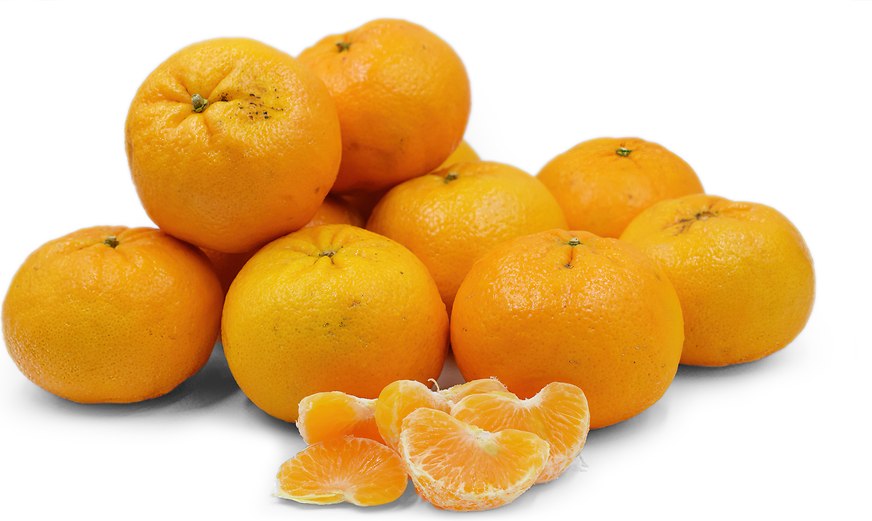


Oroval Clementine Tangerines
Estimated Inventory, lb : 0
Description/Taste
Oroval clementines are a bit larger than other clementine varieties, measuring 6 centimeters in diameter. They have a globular shape and flat bottom with a slight indentation. They have a thin, somewhat bumpy and aromatic, orange rind that is easy to peel. The dark orange pulp is very juicy and contains very few to no seeds. Oroval clementines offer a low acid, sweet-tart flavor.
Seasons/Availability
Oroval clementines are available in the mid-to-late fall months.
Current Facts
Oroval clementines are a variety of Citrus clementina, also known as Citrus reticulata, from Spain. Oroval clementines are descended from the original Algerian clementine cultivar. Oroval clementines are considered one of the main spontaneous mutations of clementines selected in the Mediterranean Basin during the 20th century. They are an early-ripening variety, making them one of the first to appear in European markets.
Nutritional Value
Oroval clementines are an excellent source of vitamin C, folate, potassium, and dietary fiber. They also contain calcium, magnesium, phosphorus, and the carotenoid beta-carotene. Oroval clementines contain phytonutrient flavonoids like hesperetin and naringenin, which along with a high vitamin C content, provide beneficial antioxidant benefits.
Applications
Oroval clementines can be eaten raw or used in a variety of cooked applications. They are easy to peel and segment, making them ideal for quick snacks or an easy dessert. Add Oroval clementine segments to fruit salads, green or grain salads. They can be used in compotes, chutneys or salsas. Add whole or chopped segments to seafood or poultry dishes. Juice them for sauces, marinades, vinaigrettes or beverages. Oroval clementines can be used to make jams, jellies or preserves. Use the zest, juice and pulp for baked goods and frozen desserts. Store Oroval clementines at room temperature for a few days and refrigerate for up to one week.
Ethnic/Cultural Info
The original Oroval clementine was found growing on the branch of a fina clementine tree. The fina variety is the original cultivar brought from Algeria to Spain in 1925 and is the variety from which most Spanish clementines originated. Spontaneous mutations occur at a low frequency in nature, but the resulting cultivars are very important to the development of new varieties. Scientists believe that most commercial varieties of sweet oranges began with a spontaneous mutation.
Geography/History
Oroval clementines were first grown in Quart de les Valls, a town just outside Valencia, Spain in 1950. By the 1960s the trees were grown throughout Spain and Italy. It was bought to the United States in 1990 and was taken to the Citrus Clonal Protection Program at the University of California Riverside where it was placed in quarantine for 5 years. Oroval clementines are primarily cultivated in Spain and Italy for local consumption and export to the rest of Europe. They can also be found in Australia, on a much more limited scale. In the United States, they are only available to nurseries and growers through the Citrus Clonal Protection Program. Oroval clementines may be spotted at local farmer’s markets or specialty markets in California.




